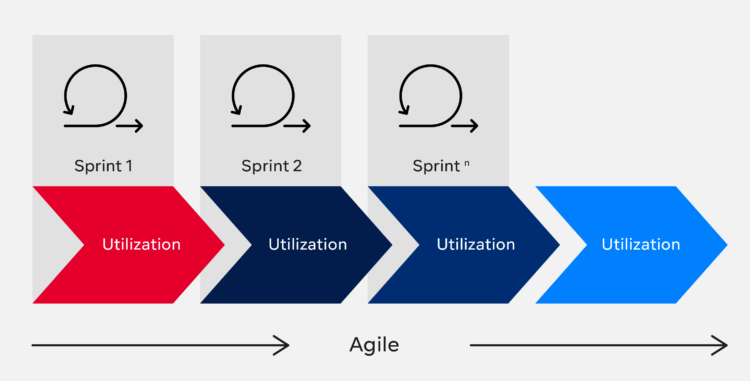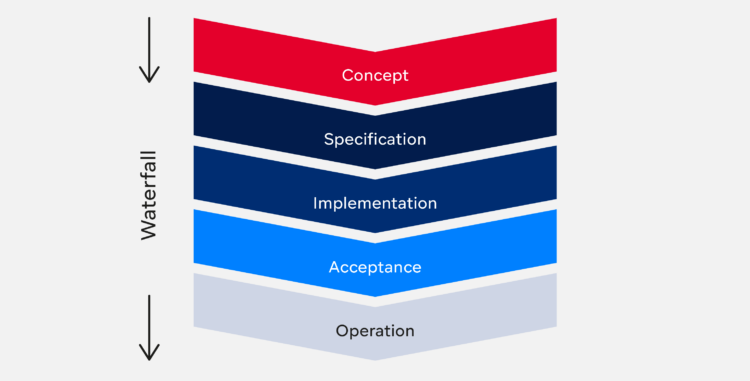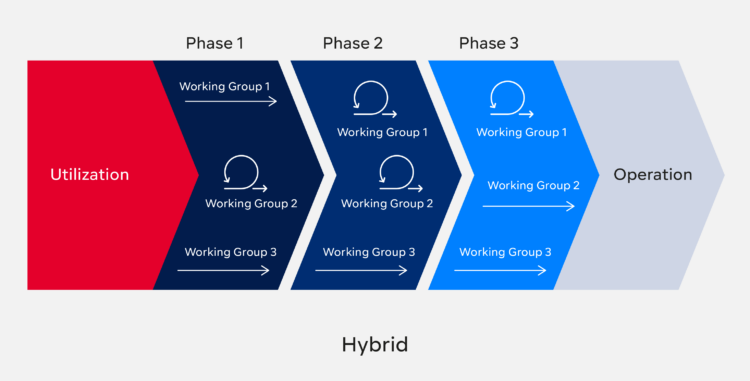
Agile as a panacea? Why classic project management has not outlived its usefulness
Rapid utilization, continuous optimization: this is what Agile project management can deliver. But is this method suitable for all areas of application? Isabel Münnig illustrates where the Agile approach encounters limitations and under which conditions the classic Waterfall method can be a good supplement.
In digitization projects, Agile project management is still the name of the game. And no wonder. Our world is becoming increasingly complex, and companies need to respond quickly to new requirements to remain competitive. With such great demand for speed and flexibility, project management based on the more classic method seems less appropriate or even outdated. Ultimately, it has a reputation for being a well-planned formula in its approach, but can often be rigid and tedious as a result. Goals and schedules that are set from the beginning may even obscure the ability to make possible optimizations. As a result, in the worst case, the user and the strategic goals are bypassed. With Agile methods, on the other hand, the usefulness of the individual interim results is regularly scrutinized and the further procedure is adjusted accordingly. The trend is therefore clearly moving in the direction of Agile. But does it work for every project?
Carve-out example: when Agile project management reaches its limits
Suppose a large trading company decides for economic reasons to carve out a division as a new, independent company. Not only does part of the company have to be split off organizationally for this, the IT landscape also has to change. The new company establishes its own IT infrastructure, taking with it and integrating a large amount of data, e.g., on clients, employees, and processes from the parent company This all needs to happen as quickly as possible so that the new company can conduct its business activities as planned. A clear case for Agile project management – or so it may seem at first.

Let’s take a closer look at the project team: 60 internal employees and 30 external consultants from various consulting firms are entrusted with the implementation. They are dispersed throughout Germany, at the new site in Spain, and some of the external staff are located in the US. Working groups are established for the various project topics, and their heads meet digitally every two weeks to discuss sprint planning and to hold review sessions; in their working groups, they hold daily stand-ups. Everything according to the Agile principle. But after a few weeks, the project team encounters the following difficulties:
Pre-determined schedule
The planned iterative approach to system implementation and migration does not align with the Legal Department’s carve-out schedule. Technical changeovers must take place by the deadline, there is no time for further iterations.
Complex organizational structure
The development of strategies, concepts and IT solutions is distributed among various teams. Each team has numerous constraints imposed on it by the originating company and can only provide the other teams with results with which they can continue to work once the coordination has been completed. Parallel working groups are thus difficult to establish. Furthermore, sprint planning – which the heads of the working groups undertake outside of their teams – makes an Agile approach within the working groups more challenging.
Compliance-related documentation workload
Documenting user stories, tasks, and dependencies takes a lot of time. The “working software over comprehensive documentation” approach that applies to Agile projects is upended by internal compliance requirements and requires more resources than planned.
Distributed capacities
Alongside the project, almost all team members are very busy with their existing operational commitments. As a result, time for joint work on the project is at a premium.
Hybrid project management: Waterfall within Agile
Considering the circumstances – fixed scheduling, fixed structures, documentation requirements, limited capacities – the Waterfall method would actually be more appropriate.

The necessary organizational structures for Agile working are still lacking at this point. The new company is only just at the beginning of developing its own culture. In the meantime, more solid structures, such as those offered by classic project management methods, would provide security and orientation. But at the same time, there is a desire to take advantage of an Agile approach and keep the duration of the project as short as possible. The solution to this dilemma can be found in a hybrid approach, in which the Waterfall method forms a framework around Agile working:
- The long-term plan is mapped out in specific sequences corresponding in time to the carve-out.
- The formulation of requirements and the steering of the individual phases are carried out according to the Waterfall principle.
- Within the various phases, each working group can decide for itself how to operate: according to the classic approach or using an Agile method. Agile teams have several sprints per phase. They will hit the phase milestones at the end of the last sprint, just like the classic groups do at the end of the phase.

This kind of hybrid approach combines the advantages of the Agile with those of the classic method. This provides project teams with a secure framework offering guidelines, particularly in the case of a newly formed organization. Meanwhile, there is enough freedom for an Agile approach in smaller teams. This approach, however, would be a hindrance to the overall project. This example demonstrates how important it is in project management to consider not only the technical and business objectives, but also the individual structure and culture of an organization. While Agile approaches are trendy and bring benefits in many cases, they are by no means an end unto themselves, rather they are intended to provide optimal support for the implementation of a project. If the framework conditions are not designed for this, classic methods or, as in this case, a combination of methods is more successful. After all, what counts in the end is the overall benefit of the project and how well the set goals can be achieved.
Which digitization projects are you planning and which project management methods are best suited for them? Isabel Münnig and her colleagues will be more than happy to advise you and help you with the conception and implementation: You can contact them here.